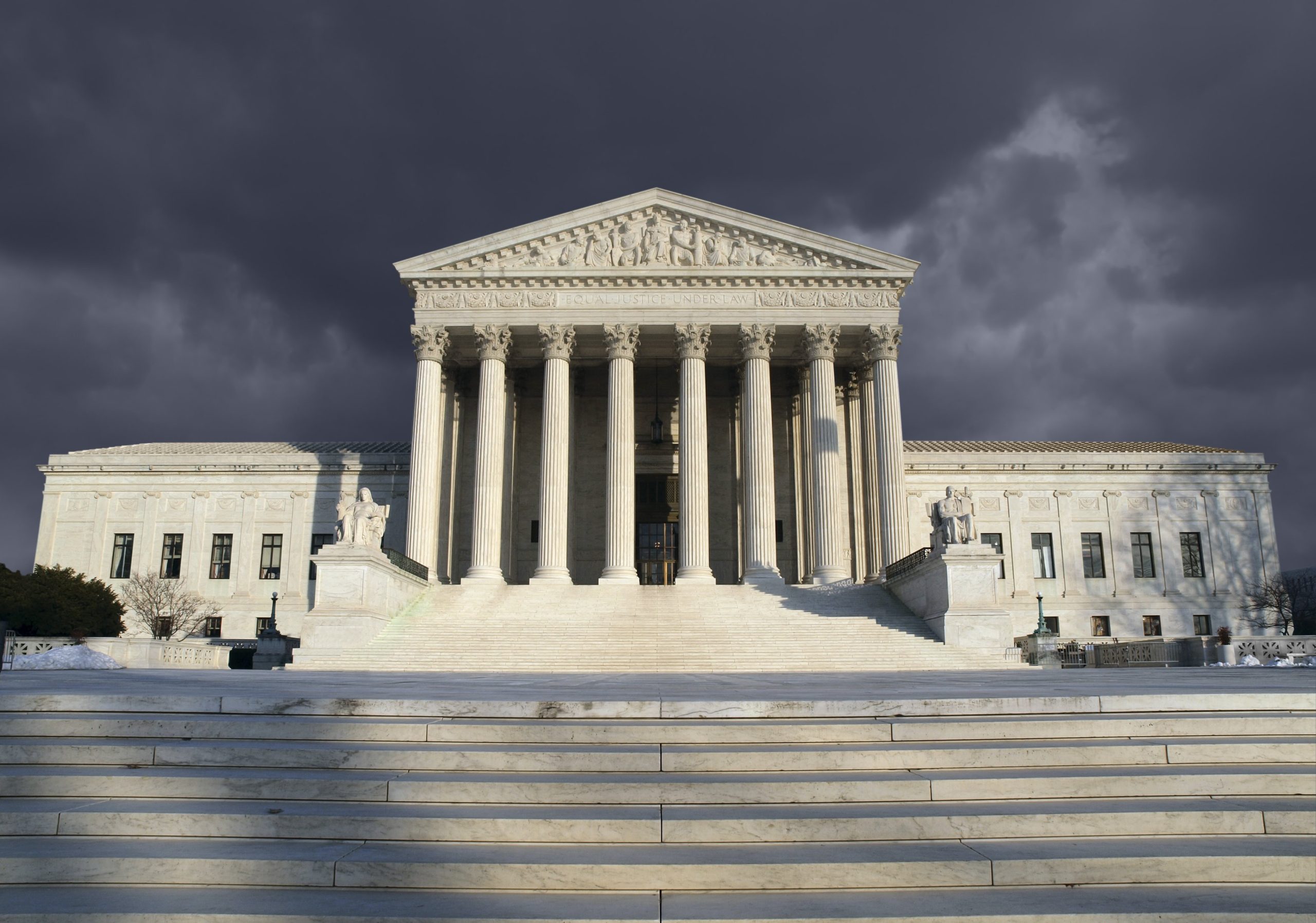Supreme Court strikes down bump stock ban
OPINION ANALYSIS
on Jun 14, 2024
at 1:39 pm
The justices ruled 6-3 in Garland v. Cargill on Friday. (Trekandshoot via Shutterstock)
The Supreme Court on Friday struck down a rule that banned bump stocks, issued by the Trump administration after a 2017 mass shooting at a concert in Las Vegas. By a vote of 6-3, the justices rejected the federal government’s argument that rifles equipped with bump stocks are machine guns, which are generally prohibited under federal law. In an opinion by Justice Clarence Thomas, the court’s conservative justices emphasized that Congress could have enacted a law that banned all weapons capable of high rates of fire, but it did not – and so the Bureau of Alcohol, Tobacco, Firearms, and Explosives was wrong to interpret the federal ban on machine guns to extend to bump stocks.
Justice Sonia Sotomayor dissented, in an opinion joined by the court’s other more liberal justices, Justices Elena Kagan and Ketanji Brown Jackson. She warned that the majority’s decision “will have deadly consequences.”
The bump stock is an attachment that transforms a semiautomatic rifle into a weapon that can discharge at a rate of hundreds of rounds per minute. The Trump administration issued the rule at the center of the case in 2018. It followed a mass shooting at a music festival in Las Vegas in which the gunman used semi-automatic rifles equipped with a bump-stock device to kill 60 people and injure over 500 more. The rule, which concluded that bump stocks are machine guns, was an about-face from the ATF’s previous position, which until 2018 had indicated that only some kinds of bump stocks are machine guns. Under the 2018 rule, anyone who owned a bump stock was required to destroy it or drop it at a nearby ATF office to avoid criminal penalties.
Michael Cargill, a U.S. Army veteran who owns a gun store in Austin, had to turn in two bump stocks that he owned to the ATF. After doing so, he went to court to challenge the rule.
The U.S. Court of Appeals for the 5th Circuit struck down the rule in Cargill’s case, prompting the Biden administration to come to the Supreme Court. On Friday, the justices upheld the 5th Circuit’s decision.
Unlike some gun-rights cases that have come before the Supreme Court recently, Cargill’s case did not involve the Second Amendment right to bear arms, but instead a federal law that defines a machine gun as any weapon that can fire “more than one shot,” “automatically” and “by a single function of the trigger.” In a highly technical 19-page ruling, Thomas concluded that the law does not support the ATF’s rule banning bump stocks. First, he explained, semiautomatic rifles that are equipped with bump stocks do not file more than one shot “by a single function of the trigger.” Each time that a shooter fires the rifle, Thomas emphasized, the shooter must “release pressure from the trigger and allow it to reset before reengaging the trigger for another shot.” The bump stock, he wrote, “merely reduces the amount of time that elapses between separate ‘functions’ of the trigger” by allowing the shooter to quickly press the trigger again.
Moreover, Thomas continued, even if a semiautomatic rifle equipped with a bump stock does fire more than one shot “by a single function of the trigger,” it does not do so “automatically,” as the law also requires. Thomas explained that if a shooter wants to fire multiple shots using a semiautomatic rifle with a bump stock, he “must also actively maintain just the right amount of forward pressure on the rifle’s front grip with his trigger hand.” This additional input from the shooter, he reasoned, means that the shots are not automatic.
Justice Samuel Alito penned a short concurring opinion in which he emphasized that the majority’s ruling reflected the only way to interpret the ban on machine guns. But he acknowledged that “the Congress that enacted” the machine gun ban “would not have seen any material difference between a machinegun and a semiautomatic rifle equipped with a bump stock.” However, Alito stressed, “the statutory text is clear, and we must follow it.”
Alito added that there “is a simple remedy for the disparate treatment of bump stocks and machineguns. Congress can amend the law — and perhaps would have done so already if ATF had stuck with its earlier interpretation. Now that the situation is clear,” Alito concluded, “Congress can act.”
In her dissent, Sotomayor read the text of the federal ban on machine guns differently. Emphasizing that “[t]his is not a hard case,” she argued that “[a]ll of the textual evidence points to the same interpretation”: Semiautomatic rifles equipped with bump stocks are machine guns. Focusing on the fact that a shooter using rifles equipped with bump stocks can fire multiple shots with one pull of the trigger as long as he maintains forward pressure on the barrel or front grip of the rifle, Sotomayor faulted Thomas for focusing instead on the internal mechanisms that initiate fire within the rifle.
And more broadly, Sotomayor contended, Congress wanted to restrict the availability of machine guns “because they eliminated the need for a person rapidly to pull the trigger himself to fire continuously.” “A bump stock,” she suggested, “serves that function,” allowing a shooter to fire at a rate as high as 400 to 800 rounds per minute. “By casting aside the statute’s ordinary meaning both at the time of its enactment and today,” she concluded, “the majority eviscerates Congress’s regulation of machineguns and enables gun users and manufacturers to circumvent federal law.”
Thomas pushed back against Sotomayor’s suggestion that the majority’s decision makes it too easy to evade the ban on machine guns. “A law is not useless,” he wrote, “merely because it draws a line more narrowly than one of its conceivable statutory purposes might suggest” – particularly when until 2018 ATF did not interpret the law as banning bump stocks.
The dispute over the bump-stock rule is one of two cases involving guns and gun rights before the justices this term. In November, the court heard a challenge to the constitutionality of a federal law that bans anyone who is the subject of a domestic-violence restraining order from possessing a gun. The justices have not yet issued their decision in that case, United States v. Rahimi.
The justices agreed to take up yet another case next term involving guns: a challenge to the Biden administration’s efforts to regulate so-called “ghost guns.” That case will likely be argued in October, with a decision to follow sometime in 2025.
This article was originally published at Howe on the Court.






